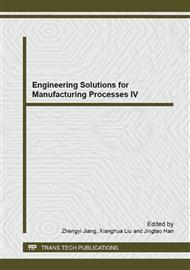p.790
p.795
p.799
p.809
p.813
p.817
p.821
p.825
p.829
Study of Anti-Radiation Sensor Technology for Fault Diagnosis System of Nuclear Facilities
Abstract:
Due to the complex structure of nuclear facilities in a high irradiation environment, people were hard to approach it, In view of these situation a fault diagnosis method based on HMM(Hidden Markov Model) of capturing the audio signal while facilities were operating was proposed. With the strong modeling ability, HMM could be applied to analyzing such as audio signal non-stationary time signal. By using this method, the original mechanical structures of nuclear facilities were not destroyed. The preposed sensors were needed as few as possible by the whole diagnosis system and which had a simple structure, low cost structure, the fault diagnosis rate was high and so on. State monitoring and fault diagnosis system of complex nuclear ower equipment could timely and effective to provide running status and potential failure information for operating personnel, which had a vital significance for the safe and reliable operation of nuclear power equipment.
Info:
Periodical:
Pages:
813-816
Citation:
Online since:
February 2014
Authors:
Price:
Сopyright:
© 2014 Trans Tech Publications Ltd. All Rights Reserved
Share:
Citation:


